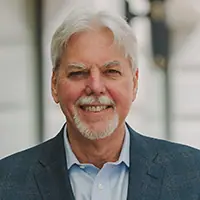
Lacker vs. Bernanke: Too Big to Go Away

Last week the Fed released 1,865 pages of transcripts that included eight formal and six emergency policy meetings in 2008. The bank made a lot of controversial decisions that year. It arranged a marriage between the investment bank Bear Stearns and JPMorgan Chase & Co. when the former was judged to be close to failure, then stood by and did nothing while an even larger investment bank – Lehman Brothers – slid into bankruptcy, leading to a near meltdown in the global financial market.
The central bank also put together a bailout for the troubled insurer American International Group even though it wasn’t entirely clear that it had the legal authority to do so, and worked with the Treasury Department to lay the groundwork for the Troubled Asset Relief Program, which would pump hundreds of billions of dollars into the U.S. banking system.
For all its mystic and mystery, reading through the official transcripts (I did a quick scan of the August 5, 2008 transcript) is like reading an extended report on the state of the U.S. economy because, well… that’s essentially what these Fed meetings are. Fed staffers offer their perspectives on the economy, as do presidents of the district banks and the chairman. It all sounds as exciting as listening to the livestock commodities report on my local NPR station, although the Federal Reserve’s new chair – Janet Yellen, who in 2008 was president of the Federal Reserve Bank of San Francisco – did try to lighten the mood at one meeting when she said that “An accounting joke concerning the balance sheets of many financial institutions is now making the rounds. On the left-hand side, nothing is right; on the right-hand side, nothing is left.”
Still, the transcripts do point to tension between liberal policymakers like Bernanke, who wanted to pump as much money into the economy as possible through a series of drastic interest rate cuts, and monetary hawks like Richmond Fed President Jeffrey Lacker who worried that easy money would light the bonfire of inflation. There was also a clear disagreement between Bernanke and Lacker over the chairman’s support for bailouts. Lacker was intellectually opposed to the federal government’s decades-old practice of rescuing large banks when they got into trouble during an economic downturn – known as Too Big to Fail – and he voiced his opposition during meetings in 2008.
In fact, their disagreement was significant enough that Bernanke felt it necessary to say (for the record, remember) during the August 5 meeting that “President Lacker and I have, I hope respect – I respect him, and I hope he respects me.” Lacker later responded to Bernanke that “For my part, our exchanges have in the past been predicated on nothing but the utmost respect. I expect that to continue. If I have done anything or said anything to contribute to any other impression, I regret it, and I apologize.”
Okay, so neither man was talking smack exactly. They are economists, after all. I wrote a profile of Lacker in 2004 when he became president of the Richmond Fed and found him to be polite, serious and just a little reserved. In public Bernanke comes off as exactly what he was before he became Fed chairman in 2006, a tenured economics professor at Princeton University. If these guys were to fight an old fashioned duel, they would probably swat at each other with rolled up printouts of the latest economic data.
But their disagreement over the 2008 bailouts continues, that much is clear. In January, during remarks at the Brookings Institution shortly before he left the Fed, Bernanke voiced support for the bank’s actions in 2008, as he has previously. He started out by comparing the political pressure the Fed faces today with the pressure it faced in the 1930s. “If you think about the 1930s we had exactly the same kind of reaction,” he said. “In fact it was more intense. And of course [President] Roosevelt, what he argued was that the strong actions he was taking were about saving capitalism essentially.”
“The Fed was created to address financial panics and its independence and its ability to act quickly is a key feature of that the Fed is about. And if we had not done that and if the financial system had imploded and the economy had plunged into even a deeper depression, I think the populist reaction would have been pretty bad as well. So we were kind of stuck one way or the other.
“So we did the right thing, I hope – we tried to do the right thing. And there certainly has been push back,” he concluded.
And one of those skeptics who continue to push back is Lacker, who argued his position on bailouts in a February 11 speech at the Stanford University’s Institute for Economic Policy Research. After laying out all of his reasons for why the federal government shouldn’t be in the business of funding bailouts, and reviewing the steps that have been taken since the financial crisis to end Too Big to Fail – including various provisions in the Dodd-Frank Act, Lacker went one step further. Essentially, he said, the financial markets and bankers themselves will never believe that Too Big to Fail has been unalterably rescinded so long as the Fed retains its discretionary authority to intervene during a crisis.
Lacker’s solution: Repeal the Fed’s emergency lending powers so that it can’t rescue another failing bank ever. The very thing which Bernanke values so highly – The Fed’s independence and its ability to act quickly – is the very thing that Lacker would take away. Bernanke would probably say that the situation in 2008 was so dire that the Fed simply had to intervene. Lacker would probably counter that the Fed’s intervention in 2008 merely convinced the skeptics that when the next crisis occurs, the Fed will once again resort to bailouts. Their differences seem irreconcilable to me.
We know how history turned out in this affair. The Fed gradually defused the crisis and the U.S. economy fell into the Great Recession rather than another depression. Still, it is interesting to ponder this question: If the situation had been reversed and Lacker was Fed chair during the crisis instead of Bernanke, how would have things turned out then? A Fed chair has to be very confident about his or her beliefs when staring into an economic abyss because that’s when academic arguments become very real.
This article originally appeared on The Bank Spot and was reprinted with permission.



